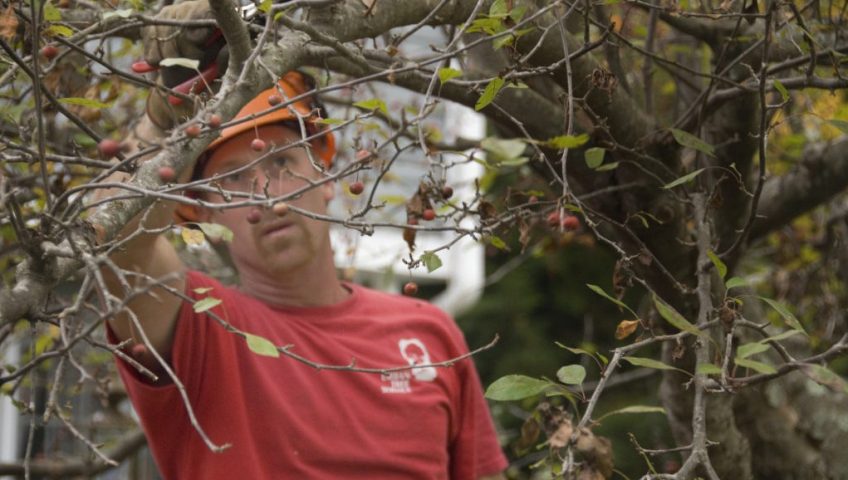Did you know that any time is a good time to prune your trees and shrubs? It’s true. And if the tree’s condition presents a danger, you should prune it right away.
There are several reasons to prune a tree:
- To keep its shape and improve appearance;
- To remove an branch that’s rubbing against another part of the tree
- To help prevent accidents by removing broken branches that can fall, moving branches away from utility lines, or clearing branches that obstruct your view when driving;
- To keep the tree healthy and remove areas that are diseased.
When doing pruning, use a pole pruner for higher branches. Don’t try to prune branches that are very high. That’s a job best left to professionals.
How and Where to Cut
The area where a branch joins the trunk or another branch is called the collar. Just above this area is where you should make the cut. You should make a cut that’s at the same angle as the branch collar. A diagonal cut creates a larger wound area, which makes it harder for the tree to heal. If cut properly, a callus will form around the cut – and that’s healthy!
When pruning bigger branches, start farther up the branch in order to reduce the weight. Cutting a very large, heavy branch from the collar can result in accident or serious injury, so take it a section at a time, ending just above the collar.
Your cut shouldn’t be too short, or too long – it should be just right! That means you haven’t left too much stub, or at the other extreme, removed the branch collar.
When to Call an Arborist
So, while any time is a good time to prune, every pruning job isn’t right for the do-it-yourselfer. There are some pruning jobs that homeowners just should not take on themselves. Certain conditions are too dangerous to tackle on your own and in those cases, a professional should be called in:
- When you can’t reach the branch with a pole pruner;
- When the area to be pruned is near power lines.
- When there’s storm damage and very heavy, broken limbs are hung up in the tree.
Professional arborists have the experience and the equipment to tackle those dangerous pruning jobs. You may think you’re saving money by doing it yourself, but take into account the cost of property damage and hospital bills if your DIY tree-pruning goes wrong.
“Most homeowners simply don’t have the tools, knowledge or experience necessary to safely attempt their own tree work,” says Tchukki Andersen, staff arborist with the Tree Care Industry Association (TCIA). “We hear many unfortunate stories each year of homeowners getting severely injured or killed while attempting this dangerous, and often misunderstood, work on their own.”
The professionals at Urban Tree Service, have the training, experience, and knowledge to make sure the job gets done safely – and right. So let us do the work for you. Just call 332-1246 for a free residential or commercial consultation!
